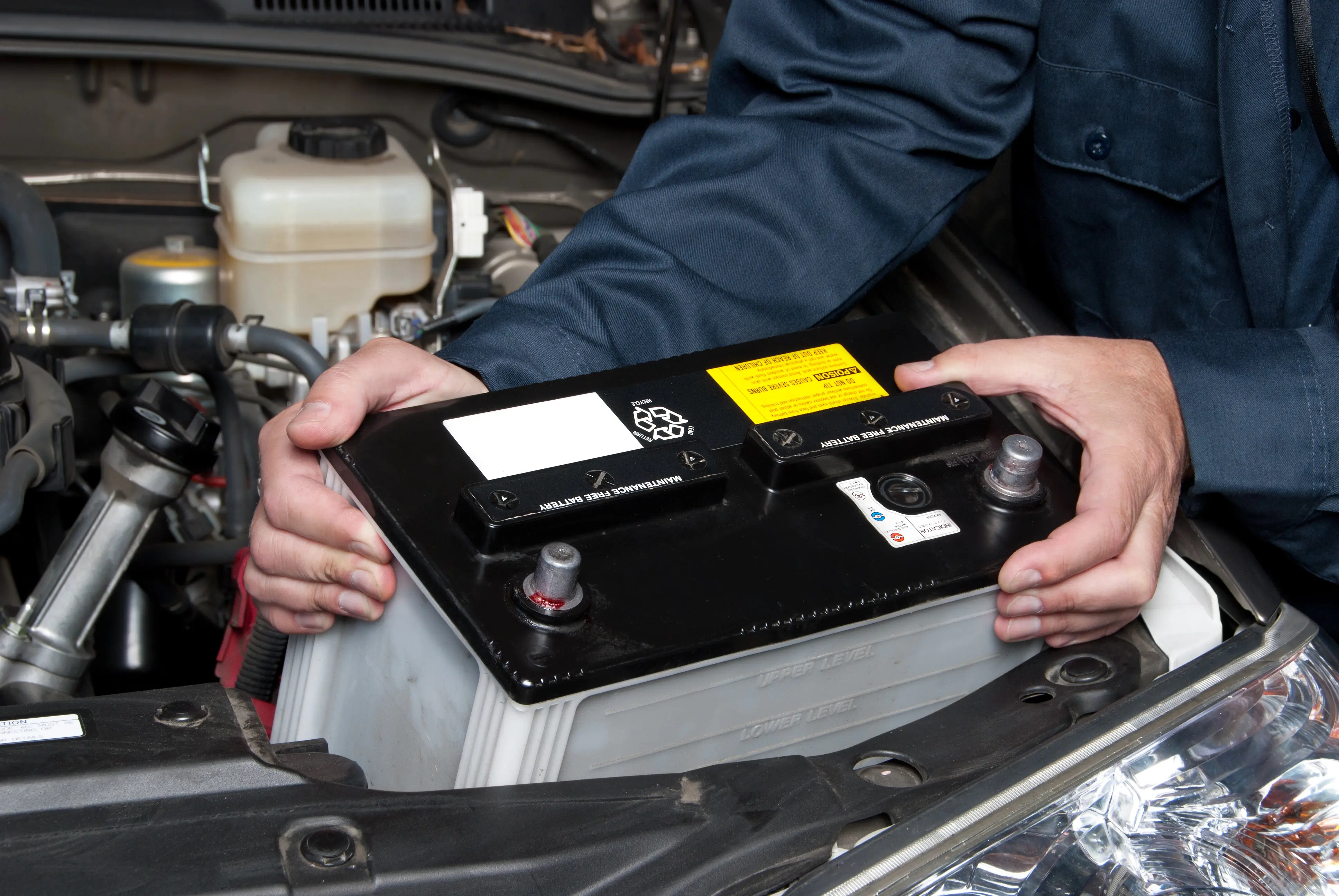You can test alternators by disconnecting negative battery cables and using a voltage meter.
QUICK LOOK
- The alternator is one of the most important electrical components of your car
- Without a functioning alternator, your car can’t start
- Disconnecting the car battery is one of the most popular DIY alternator tests, but it’s not always a good idea because it can kill your voltage regulator and/or cause a massive voltage spike that damages your car’s electrical system
LEARN MORE: How to save on car insurance
How do you know your car alternator is bad?
The alternator provides your car with electricity and recharges the vehicle’s battery by turning mechanical energy into electrical energy. Think of it as your car’s personal charging system.
A failing alternator won’t have enough power to properly charge the battery while the car engine is running, which could eventually leave you unable to start your vehicle after your battery dies.
Here are some common symptoms of a faulty alternator you should look out for:
- Dim lights
- Dead battery
- Illuminated dashboard lights (such as a battery warning light)
- Electrical problems
- Burning rubber or wire smell
- Trouble starting or frequent stalling
How to test alternators by disconnecting the battery
If your car is having trouble starting or the battery won’t hold a charge, you may be dealing with a bad alternator—but it could also be a bad battery.
You can confirm that your alternator is failing by disconnecting the battery and performing a simple test.
However, just because it’s a simple test doesn’t mean it is a safe test for you or your vehicle. That’s why it’s important to pay attention to the steps below—or leave the test to a mechanic if you don’t have the technical know-how.
1. Park in a safe place
This alternator test should always be performed in an open space away from structures, trees, or any other flammable materials. Your driveway or an empty parking lot can both be good places to conduct this test if they are open!
2. Get the engine running
Place your car in park before you start your engine. Keep your car running in the parked position while performing the alternator test.
Before moving on to the next step you may want to put on a pair of heat-resistant rubber gloves to avoid burning yourself on the hot engine.
3. Find the positive and negative battery terminals
Pop open the hood of your car and hook it into place so you can identify the positive and negative battery terminals. Car battery terminals are color-coded and marked so they can be easily identified. The positive battery terminal is red with a plus (+) sign and the negative battery terminal will be black and have a minus (–) sign.
If your battery recently died, the negative and positive battery terminals are where you connect the jumper cables when you jump-start your car!
4. Disconnect the negative battery terminal
Once you’ve correctly identified the negative and positive terminals, you can disconnect your car battery to test your alternator.
While the engine is running, remove the cable to disconnect the negative battery terminal.
Make sure you do not disconnect the positive battery terminal: This could cause a spark and irreparable damage to your computer system.
A good alternator will keep the engine running after you’ve disconnected the negative battery terminal, but if the engine performance decreases, stalls, or dies out your alternator may be faulty. However, a failing alternator could still produce just enough energy to keep your engine running, so you’ll need to run further diagnostics to be certain.
Key TakeawayMake sure you disconnect the negative battery terminal when conducting the alternator test as disconnecting the positive terminal will damage your car’s electrical computer system.
5. Run a voltage test using a voltmeter
While the negative terminal is disconnected, use a voltmeter to measure the battery voltage and check if there is a voltage between car battery terminals. You’ll take two voltage readings: one with all the car accessories turned off and the other with them all turned on.
The first voltage reading should give a score of 14 volts and the second should be at least 13 volts. If your voltage tests are reading scores of less than those numbers, that’s a good indicator you have a bad alternator.
Don’t have a voltmeter? They’re pretty easy to find on Amazon for $30 or less.
6. Test the alternator using a multimeter
A multimeter measures voltage, electric current, and resistance whereas a voltmeter only measures voltage. Using a multimeter is a good test because it will deliver the most comprehensive readings.
Here’s how you test the alternator using a multimeter:
- Turn off your vehicle: If your vehicle isn’t off already, turn it off
- Prepare your multimeter: Adjust your multimeter voltage to 20 DC volts or if it doesn’t have an incremental setting simply set it to DC volts
- Press the probes to your battery terminals: Touch each multimeter probe to the correct terminals, connecting positive to positive and negative to negative
- Take the battery reading: The voltage reading should read between 12.4 and 12.6 volts. If it’s below this, you could have a bad battery
- Start your vehicle and check the reading: Press the probes to the battery terminals and the multimeter should read 14 to 14.5 volts. If the voltage is lower than your initial reading, then the charger is not working
If the engine performance decreased when you disconnected the car battery and both voltmeter and multimeter voltage readings were below 14 volts: You’ll need to head to an automotive repair shop to get a new alternator.
FAQ
-
Which battery terminal do you disconnect to test the alternator?
-
What happens if your alternator goes out while driving?

Talullah Blanco is an insurance writer specializing in car maintenance, repair, and insurance. She leverages her experience as a storyteller to create useful, money-saving content for car owners. Since joining Jerry’s team, Talullah has written over 600 articles on topics including license requirements, car insurance basics, and vehicle specs. Prior to joining Jerry, Talullah worked as a freelance writer contributing to lifestyle magazines and media websites, and as a fundraising coordinator.





